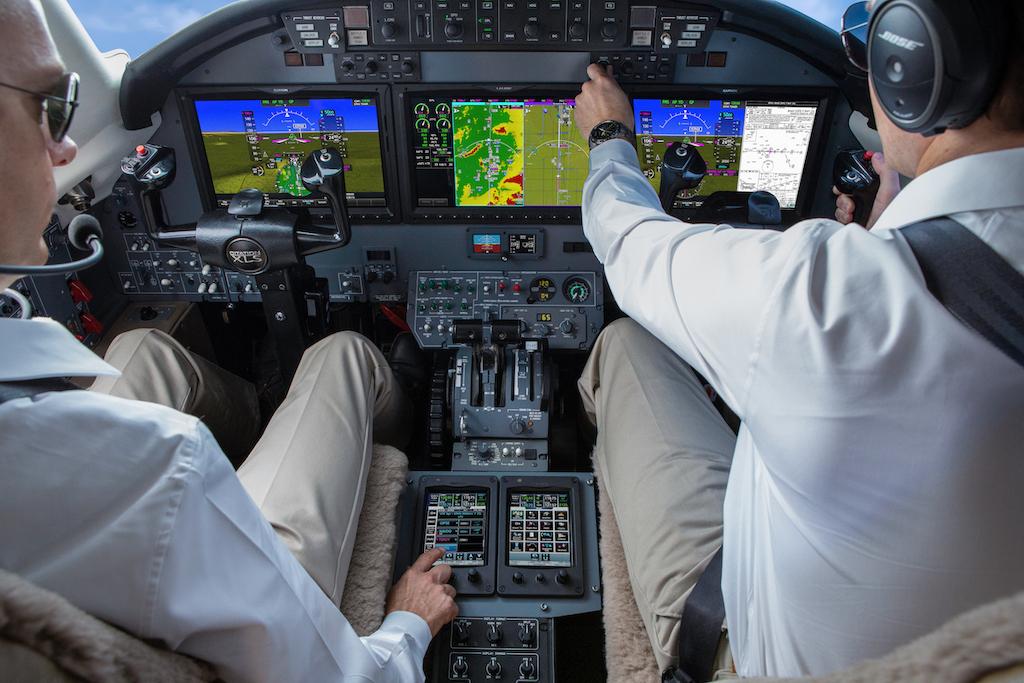
An airline crew is cleared to land on Runway 28C, but the flight crew aligned the airplane with and landed on parallel runway 28L.
The flight crewmembers reported that, before beginning the descent into the terminal area, the first officer (the pilot monitoring) programmed the flight management computer (FMC) for the area navigation (RNAV) approach to Runway 28C.
During the descent, the crew was instructed twice by approach control to change the landing runway. The crew was first instructed to expect a visual approach to Runway 32; a short time later, it was provided vectors for the visual approach to runway 28C.
On the base leg of the approach, the crew reported that the airport was in sight, and the controller cleared the aircraft for the visual approach to Runway 28C. The captain (the pilot flying) stated that he visually acquired the precision approach path indicator (PAPI) lights.
Runways 28C and 28L both had PAPI lights located on the left side of the respective runway. The captain stated that he observed one set of PAPI lights, which he thought were associated with Runway 28C. The captain requested that the first officer extend the centerline of the approach from the next waypoint,
- Distraction: The first officer reported that both FMC control display units had blanked, taking away the backup lateral and vertical navigational guidance to Runway 28C.
Although the PAPI lights provided vertical guidance, the first officer attempted to diagnose and restore the FMC’s lateral guidance, which created a distraction at a critical phase of the flight that reduced the crew’s opportunity to ensure correct runway alignment.
While on final approach, the crew requested that the controller confirm that the airplane was cleared to land on Runway 28C; the controller provided this confirmation. However, at some point afterward, the controller observed that the aircraft was aligned with Runway 28L.
After verifying that no conflicting traffic existed, the controller decided to allow the flight to continue and land on Runway 28L rather than issue a go-around instruction at a low altitude. This flexibility is permitted by FAA, which allows controllers to exercise their best judgment if they encounter situations not covered by guidance.
The flight crew subsequently aligned the airplane with and landed on parallel Runway 28L, which was located about 1,200 ft. to the left of intended Runway 28C.
A review disclosed that the first officer thought the PAPI lights for 28C were out of order. Since they had PAPIs in front of them, it could be reasoned that they were not lined up on 28C. In fact, the PAPIs that were out of order were on a different runway.
Although the incident aircraft had a runway awareness and advisory system installed in the cockpit, the operator did not select the option to provide crews with an aural alert for the runway that the airplane would be approaching in flight. If the operator had selected this option, the system would have alerted the incident flight crew that the airplane was aligned with a runway that was not consistent with the landing clearance provided by air traffic control, which might have precluded the wrong runway landing.
Let’s recap.
- A ground crew, even though briefed that the engines would be running had done their walks so many times that routine overpowered change.
- An airline crew just expected the plane to be behind them. Their radio calls demonstrate they didn’t change that expectation throughout the incident, which resulted in a tail strike. They looked where they were convinced the conflict existed.
- The distraction of the FMS dropping off led to a rushed feeling and, needing confirmation of a runway, pilots grasped at a misread NOTAM and landed on the wrong runway.
These incidents are the type that keep safety experts awake at night. It’s easy to say that safety and standards programs ensure all aircraft in an organization are operated the same, safe way, but there has to be a way, rather than saying “just deal with it,” to identify and call out when a distraction has created a potential pot hole in the normal flow of procedures. That way pilots will be on heightened alert when the accident chain has started.
One Distraction Could Have Serious Consequences, Part 1: https://aviationweek.com/business-aviation/safety-ops-regulation/one-di…
One Distraction Could Have Serious Consequences, Part 2: https://aviationweek.com/business-aviation/safety-ops-regulation/one-di…





